Abstract
Forty patients with severe pelvic fracture and extraperitoneal hemorrhage were reviewed. Eighteen patients seen prior to 1975 (group I) were clinically similar to 22 patients seen subsequently (group II). Major pelvic fracture hemorrhage was defined as bleeding in excess of 2,000 ml over and above initial resuscitation volumes. Ten of 22 group II patients met the criteria for continued extraperitioneal bleeding and were immobilized in an inflatable G-suit after surgically remediable lesions had been excluded. Ventilator support and hemodynamic monitoring were instituted and clinical response recorded. Prompt cessation of bleeding was observed in nine of ten patients. One patient required selective catheterization of a bleeding artery with subsequent embolic occlusion. Significant reductions in overall mortality and the frequency of shock related death were observed in group II patients. Sepsis was the leading cause of late death in survivors. Immobilization of pelvic fracture patients in the G-suit is recommended as a means of controlling continuing retroperitoneal hemorrhage when surgically correctable bleeding points have been dealt with. Failure of patients to respond promptly to the G-suit strongly suggests arterial bleeding amenable to selective catheterization and embolic occlusion.
Full text
PDF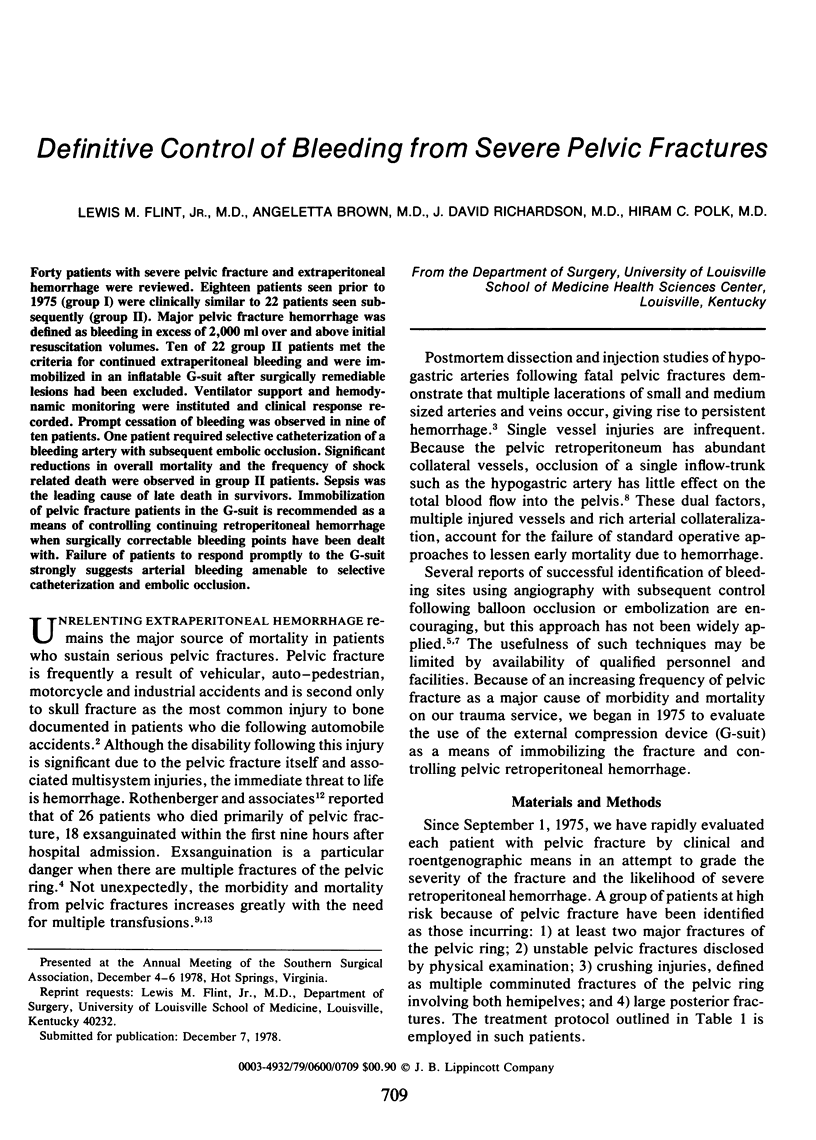
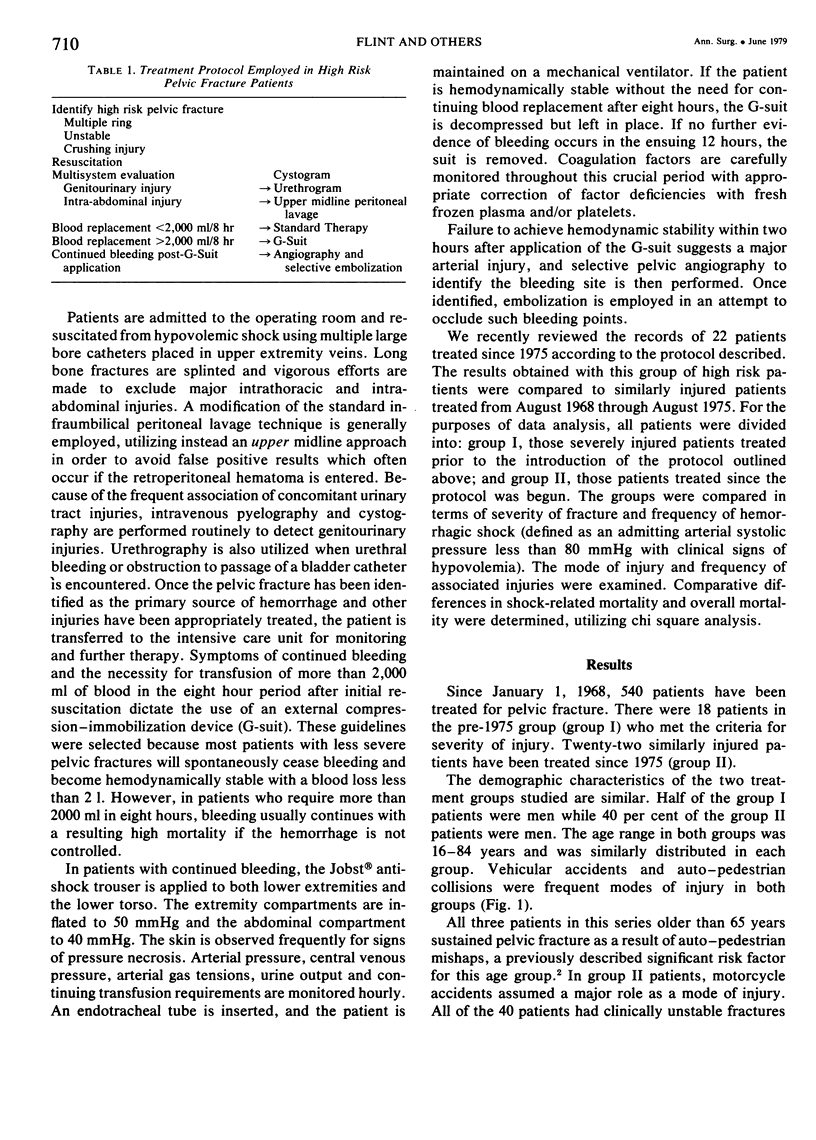
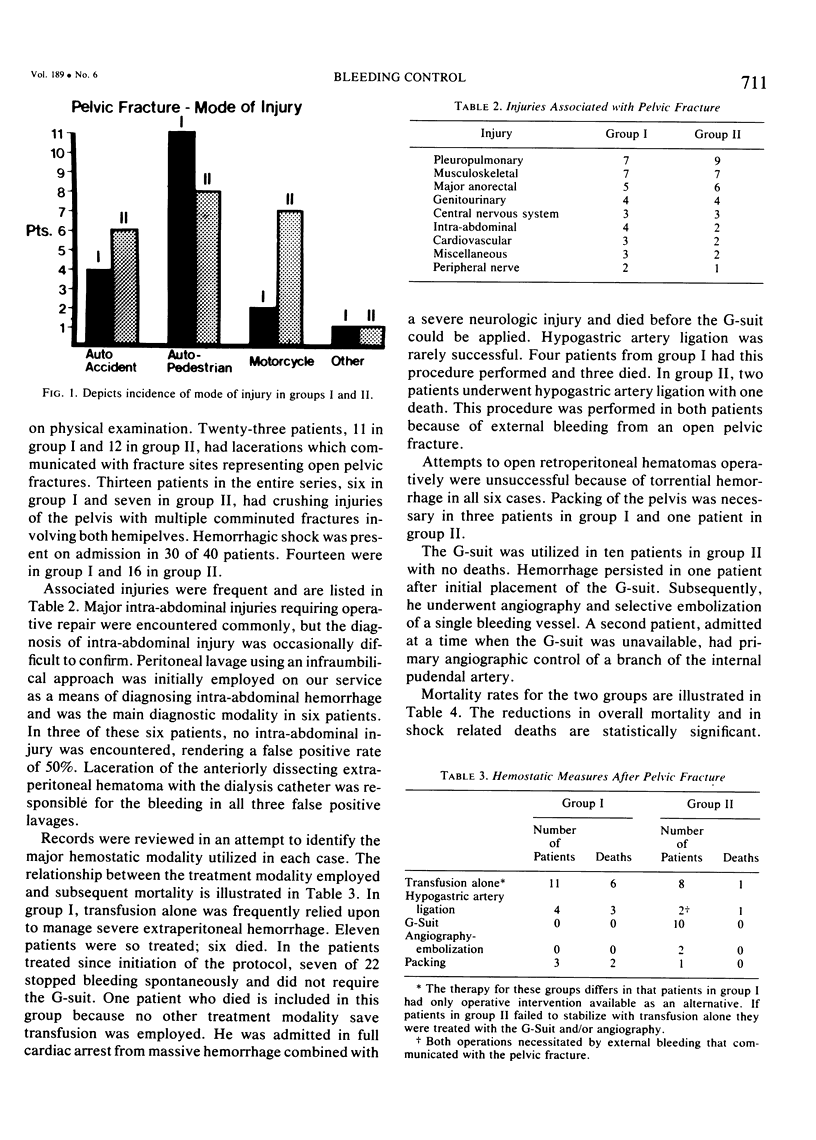
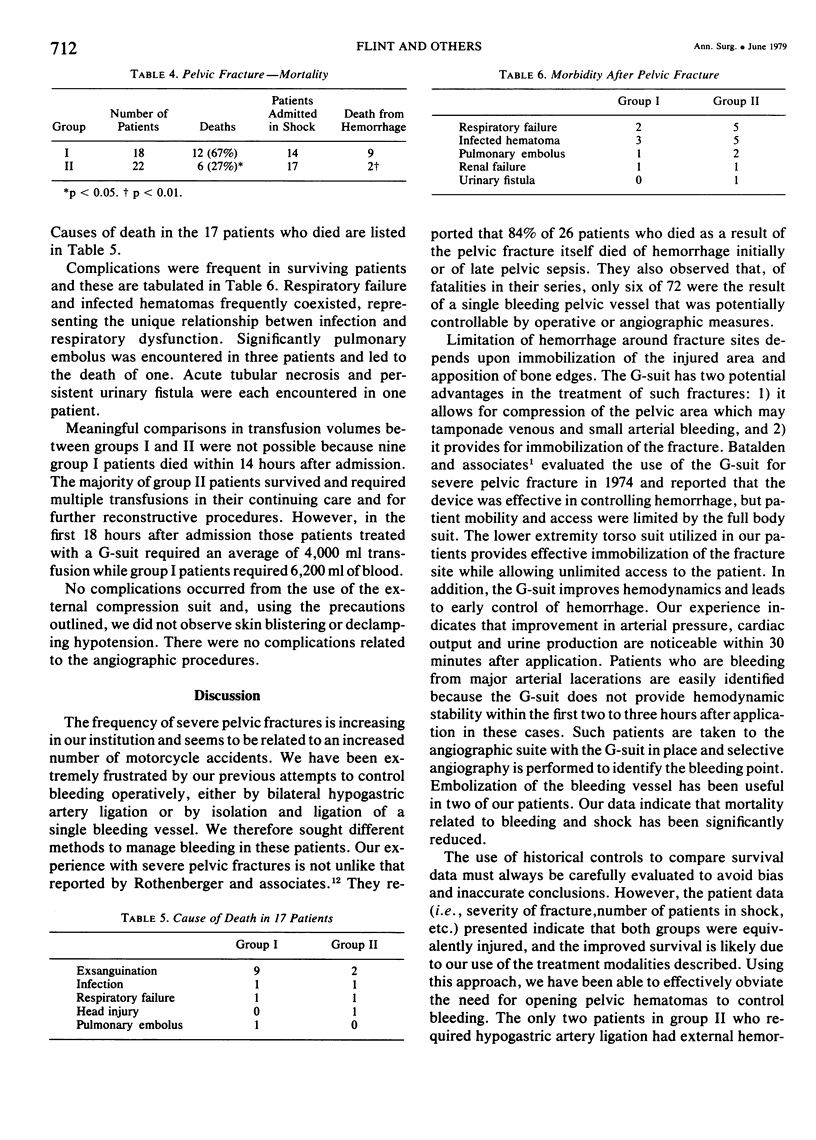
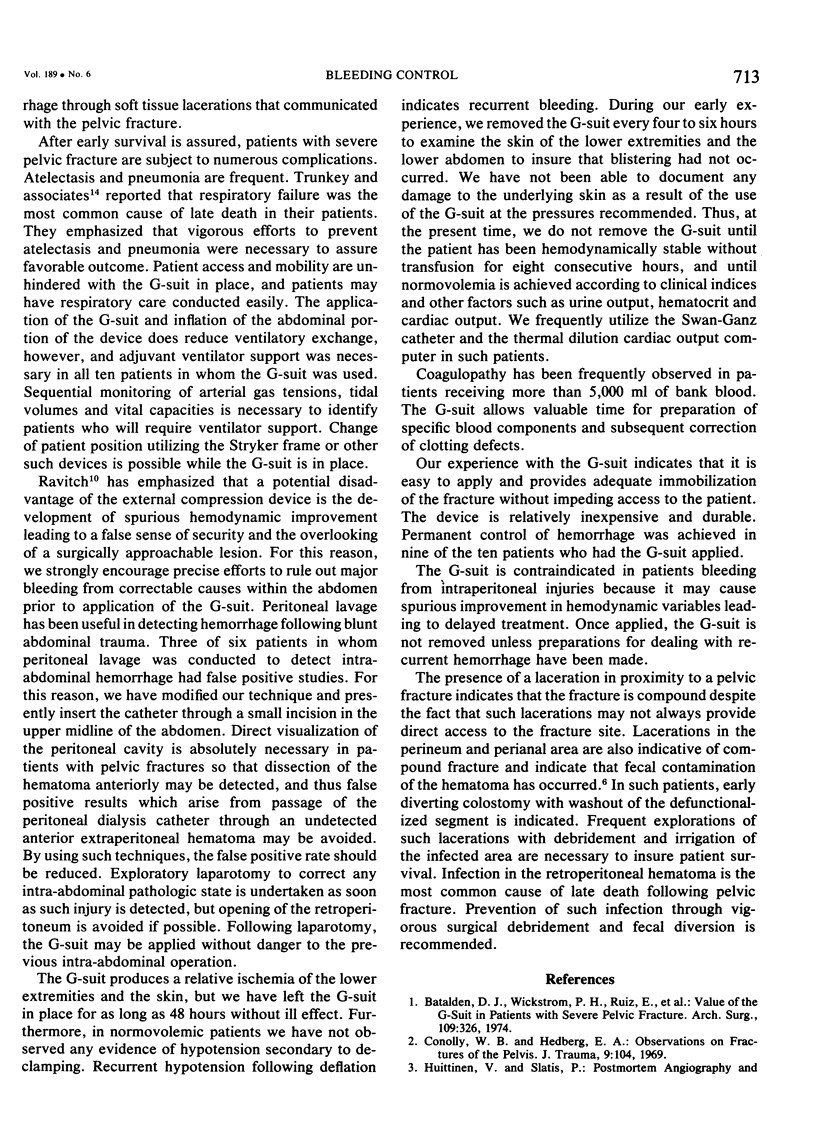
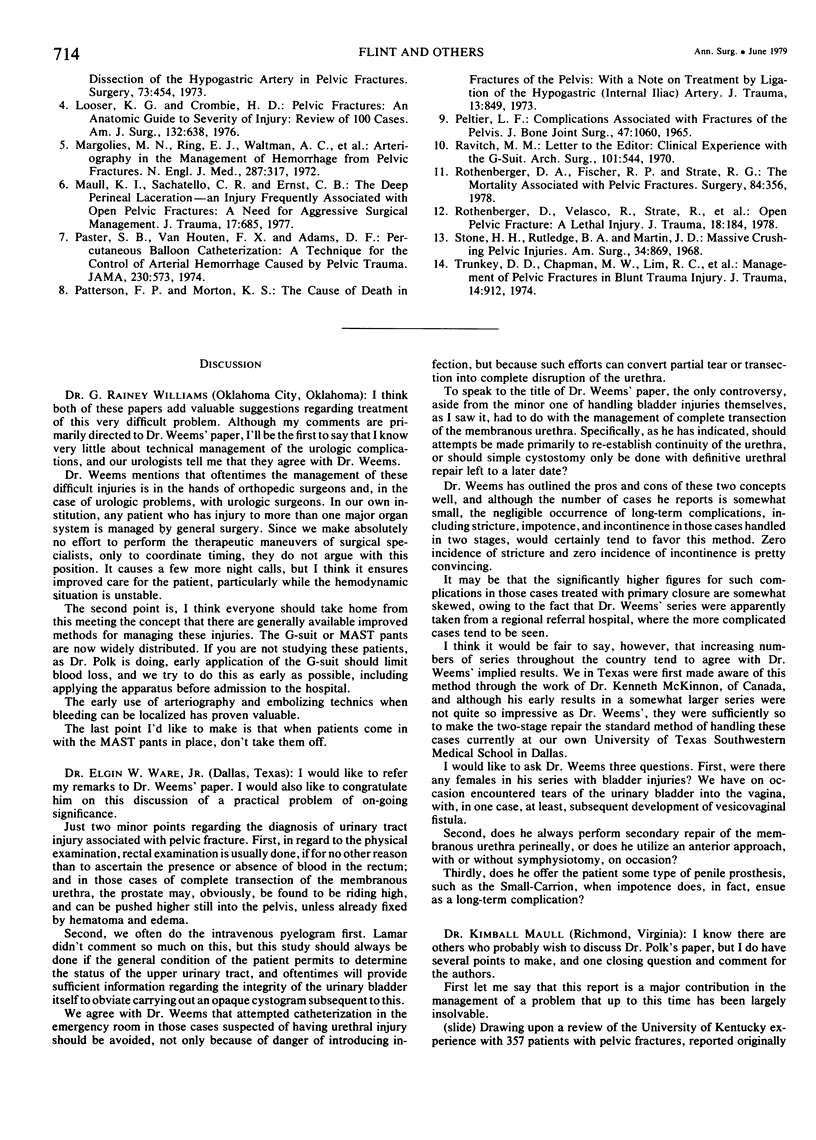
Selected References
These references are in PubMed. This may not be the complete list of references from this article.
- Batalden D. J., Wichstrom P. H., Ruiz E., Gustilo R. B. Value of the G suit in patients with severe pelvic fracture. Controlling hemorrhagic shock. Arch Surg. 1974 Aug;109(2):326–328. doi: 10.1001/archsurg.1974.01360020186036. [DOI] [PubMed] [Google Scholar]
- Conolly W. B., Hedberg E. A. Observations on fractures of the pelvis. J Trauma. 1969 Feb;9(2):104–111. doi: 10.1097/00005373-196902000-00002. [DOI] [PubMed] [Google Scholar]
- Huittinen V. M., Slätis P. Postmortem angiography and dissection of the hypogastric artery in pelvic fractures. Surgery. 1973 Mar;73(3):454–462. [PubMed] [Google Scholar]
- Looser K. G., Crombie H. D., Jr Pelvic fractures: an anatomic guide to severity of injury. Review of 100 cases. Am J Surg. 1976 Nov;132(5):638–642. doi: 10.1016/0002-9610(76)90361-5. [DOI] [PubMed] [Google Scholar]
- Margolies M. N., Ring E. J., Waltman A. C., Kerr W. S., Jr, Baum S. Arteriography in the management of hemorrhage from pelvic fractures. N Engl J Med. 1972 Aug 17;287(7):317–321. doi: 10.1056/NEJM197208172870701. [DOI] [PubMed] [Google Scholar]
- Maull K. I., Sachatello C. R., Ernst C. B. The deep perineal laceration-an injury frequently associated with open pelvic fractures: a need for aggressive surgical management. A report of 12 cases and review of the literature. J Trauma. 1977 Sep;17(9):685–696. [PubMed] [Google Scholar]
- PELTIER L. F. COMPLICATIONS ASSOCIATED WITH FRACTURES OF THE PELVIS. J Bone Joint Surg Am. 1965 Jul;47:1060–1069. [PubMed] [Google Scholar]
- Paster S. B., Van Houten F. X., Adams D. F. Percutaneous balloon catheterization. A technique for the control of arterial hemorrhage caused by pelvic trauma. JAMA. 1974 Oct 28;230(4):573–575. doi: 10.1001/jama.230.4.573. [DOI] [PubMed] [Google Scholar]
- Patterson F. P., Morton K. S. The cause of death in fractures of the pelvis: with a note on treatment by ligation of the hypogastric (internal iliac) artery. J Trauma. 1973 Oct;13(10):849–856. [PubMed] [Google Scholar]
- Ravitch M. M. Clinical experience with the G-suit. Arch Surg. 1970 Oct;101(4):544–544. doi: 10.1001/archsurg.1970.01340280096028. [DOI] [PubMed] [Google Scholar]
- Rothenberger D. A., Fischer R. P., Strate R. G., Velasco R., Perry J. F., Jr The mortality associated with pelvic fractures. Surgery. 1978 Sep;84(3):356–361. [PubMed] [Google Scholar]
- Rothenberger D., Velasco R., Strate R., Fischer R. P., Perry J. F., Jr Open pelvic fracture: a lethal injury. J Trauma. 1978 Mar;18(3):184–187. [PubMed] [Google Scholar]
- Stone H. H., Rutledge B. A., Martin J. D., Jr Massive crushing pelvic injuries. Am Surg. 1968 Dec;34(12):869–878. [PubMed] [Google Scholar]
- Trunkey D. D., Chapman M. W., Lim R. C., Jr, Dunphy J. E. Management of pelvic fractures in blunt trauma injury. J Trauma. 1974 Nov;14(11):912–923. doi: 10.1097/00005373-197411000-00002. [DOI] [PubMed] [Google Scholar]


